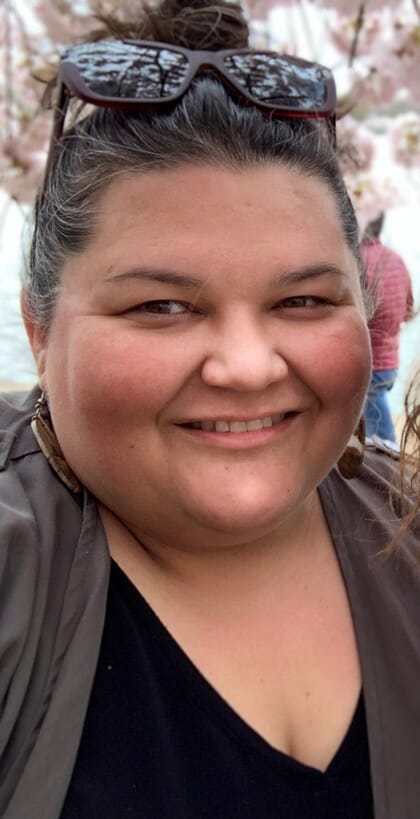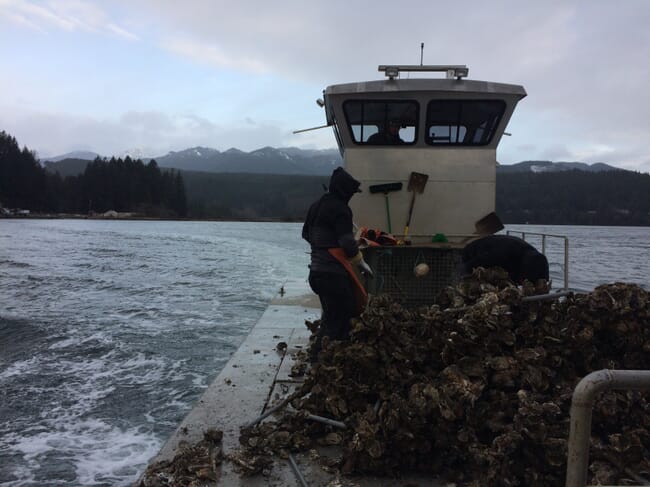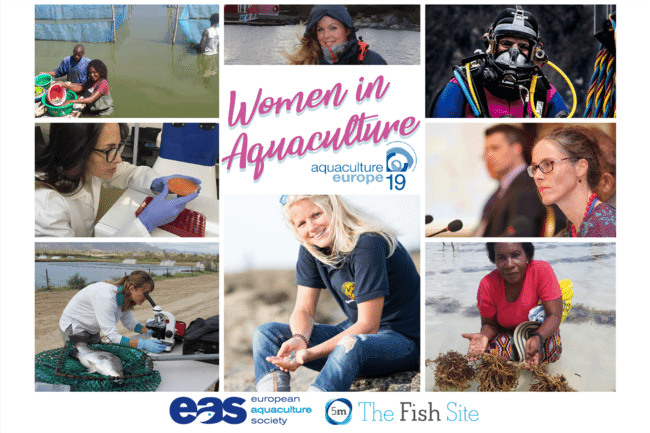As The Fish Site prepares for this week's Women in Aquaculture seminar, which it is running with EAS in Berlin on 9 October, Tiffany tells us about what has inspired her in her career so far and her hopes for the sector in the future.
What inspired you to move into aquaculture?
I grew up on the beautiful Olympic Peninsula of Washington State, eating fish and shellfish before I could eat solid food – as my parents ground up local foods for our baby food. My childhood best friend’s family owned a local shellfish farm, which had – and still has – a significant role in our local rural economy. Working the tideflats picking oysters for $3 per bucket from ages 12 to 15 and later working at the local seafood store during high school, gave me a deep appreciation not only for the cultural and socio-economic significance of aquaculture to the Pacific Northwest, but also the potential of these practices for delivering both sustainable rural livelihoods and ecosystem benefits.

Briefly describe your aquaculture career.
While I worked in shellfish aquaculture in my youth, for most of my early career after college and grad school, I worked at a tribal non-profit and for Washington Tribes, with a particular focus on research, fisheries and habitat conservation and financial management. Tribes are co-managers of the fish and shellfish resources in Washington State and are leaders in habitat protection. While the work I did was incredibly fulfilling I missed being near the tideflats and working directly with shellfish. So, about four years ago, I began working at the same oyster and clam farm I worked at when I was 12 – only this time as one of the managers. I helped oversee the farm’s finances and permit requirements, and since the office was located right on the farm, was also able to jump in for the occasional shucking session or educational visit.
Working for private industry can be hectic, though, and didn’t leave enough hours in the day for another of my main passions – research. As a result, about two years ago I moved across the country to Virginia and began working for The Nature Conservancy(TNC), the international environmental non-profit, in its new global aquaculture programme. I was impressed by TNC’s mission – which incorporates both people and the planet, and its new focus on the triple bottom line of aquaculture: the environmental, economic and social benefits it can deliver when aquaculture is done well – as well as the opportunities it gave me to work internationally and with local communities to improve industry governance and practices.
Describe a typical day in your current role.
I would say I have two main types of day, both equally fulfilling in their own way:
- Writing on a computer or participating in a team video call in Arlington, Virginia – I’m part of a global team at our global headquarters, which means working around different time zones. We often have early-morning calls with our Tanzania team and/or late-night calls with our Indonesia or Palau teams, for example, to discuss the collaborative projects we’re undertaking in smart siting and ecosystem services research.
- Out in the field, working with our country and US state chapters on their projects, learning from local communities and writing and implementing better environmental, social and economic management practices for aquaculture.

© Diana Waters
What’s the most memorable or peculiar experience you’ve had in aquaculture?
One of my most memorable experiences recently was in Opotiki, New Zealand. At the end of a two-week trip to meet with co-workers and partners, I drove out to the Bay of Plenty – a beautiful region that reminded me of my home – and had the honour of meeting with the Whakatōhea Maori Trust Board. They operate an offshore mussel farm, have a strong vision for how sustainable aquaculture can uplift their people and have a goal of being the food bowl that feeds the world. They’re accomplishing something really important and I think have a lot of valuable insights to share with the global aquaculture industry.
Are there any individuals or organisations in aquaculture who you’ve found particularly inspirational?
I get really inspired by the growing movement of citizen scientists that are contributing insights to scientific understanding and stewardship of natural resources. Marine farmers, in particular, being out on the water every day and professionally invested in ocean health, are in an important position to contribute their knowledge, monitor shifting climate and biodiversity trends and engage in adaptive management.
One great citizen science example is the SoundToxins monitoring programme in Puget Sound, Washington, which teaches oyster farmers and community members to identify phytoplankton and provide early warning of harmful algal blooms that can affect shellfish and human health. Another is the University of California Santa Cruz (UCSC) project that is working with oyster growers and TNC to use drones to monitor shellfish and eelgrass interactions, with the goal of teaching farmers and citizens how to monitor their tideflat ecosystems throughout the year.
Have you encountered any gender-related challenges as a woman in aquaculture?
Unfortunately, no sector is free of these challenges, but overall, I’ve been fortunate to work with great people that have helped support me.
What advice would you give to women looking to start a career in the sector?
I would tell women that their voice, perspectives and experience is valuable and needed. I think some women may be intimidated by the perception of aquaculture as a heavily male-dominated sector, but in reality there are so many women in aquaculture globally. And in the same way ecosystems thrive on biodiversity, aquaculture needs people from a variety of backgrounds that have different expertise – skillsets in communications, finance, biology and oceanography, just to name a few, are all backgrounds that aquaculturists, and non-profits that work in aquaculture, value and need.
What would be your dream role in aquaculture and do you think it’s realistic to achieve?
I’m fortunate to already have something approaching my dream role at TNC. As one of the world’s largest environmental non-profits, we have a pretty unique opportunity to contribute to ground-breaking science; work with local communities for social, economic and environmental benefit; and advocate for using impact investments to help feed a growing population in a sustainable way. The recent impact investment report we published in collaboration with Encourage Capital is a great example of the work we’re doing to help shift thinking across the wider sector.
Which new or forthcoming innovation do you think has the most potential to improve the aquaculture sector?
I think that there are so many promising innovations that are currently happening in the global seaweed sector, including new applications for bioplastics, animal feeds, nutraceuticals and biofuels. Seaweed has this amazing potential to be both environmentally restorative and economically beneficial.
On the flipside of new innovation, I think there is a tremendous amount that the overall aquaculture community can learn from indigenous aquaculture management and traditional ecological knowledge. To be truly sustainable, aquaculture should be adapted and managed at the local level for the specific culture, environment and economy. Learning from traditional peoples and cultures that are place-based and have a long-term vision and stewardship approach for the management of their natural resources would be of benefit to many aquaculture sectors.
What outstanding challenge facing the aquaculture industry would you most like to solve?
It’s certainly not an issue unique to the aquaculture industry, but reducing plastics in the marine environment is another passion project of mine. Given that much of the aquaculture industry takes place in the water, derelict gear does have the potential to contribute to the wider marine plastics crisis. But at the same time, the aquaculture industry is itself being disproportionally affected by marine plastic pollution from elsewhere and has the influence to affect a huge amount of change. There are exciting innovations happening in algae-based bioplastics, for example – sustainably farmed seaweed could be one of the not-so-secret weapons to replace conventional single-use plastics.

© Tiffany Waters


Further information
The latest Women in Aquaculture seminar is being run by The Fish Site and EAS at 16.30-17.30 on 9 October in Berlin. Attendance is free for delegates to AE2019, but places are limited.



